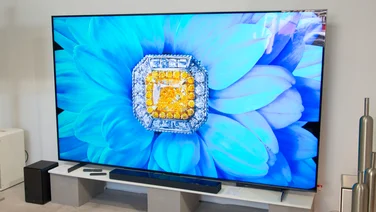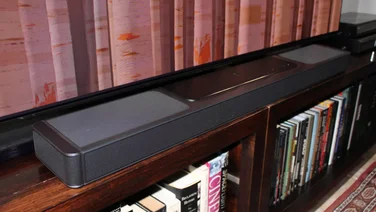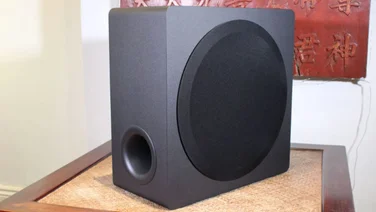To help us provide you with free impartial advice, we may earn a commission if you buy through links on our site. Learn more

Mitsubishi’s HC3800 is a 1080p DLP compact home cinema projector, so it’s easily placed in any room without taking up much space. Its lamp brightness is a little lower than most similarly priced projectors, but this isn’t a problem for watching movies in a darkened room. It’s a little short on inputs, with only a single HDMI input, in addition to the usual composite, component, VGA and S-Video. This is a disadvantage if you want to be able to connect both a set-top box and a games console via HDMI, for example. The projector’s lens position is higher than those of many compact projectors, which can cause alignment issues over short throw distances on to a fixed height screen. A pair of adjustable front feet makes height adjustments easier. The projector runs quietly, although a slight high-pitched whine is audible at close distances. The fan noise was more noticeable when we switched from the default Low brightness setting to Standard, but it’s worth it for the dramatic improvement in visibility under lighting. As soon as we switched it on, we were blown away by the HC3800’s stunning colour, which is among the richest and most natural we’ve seen. Skin tones were perfect. Areas of fine detail, subtle shading and gentle gradation were beautifully reproduced, while the dark tones and glowing colours of our high-contrast test looked stunning. We could see no rainbow effect on high contrast video sequences, while black tones were deep and realistic. Even black and white video footage barely suffered from the rainbow effect. The projector has one of the simplest remote controls we’ve seen. You can use it to switch input source, adjust the colour and sharpness of the image or recall a previously programmed image setting profile. This makes the remote easy to use, although it doesn’t work too well unless you point it directly at the projector. The menu system contains a wide range of more advanced options in several categories. Navigating the menus, which appear as pull-downs at the upper left of the screen, takes a bit of getting used to, but everything you need is easy to find. The Image menu allows you to adjust settings like gamma, brightness, contrast and colour temperature. An Advanced sub-menu lets you switch to Cinema mode (it has a 2.35:1 aspect ratio, but requires an anamorphic lens, which isn’t worth the bother), perform fine colour adjustment, and apply image correction settings. All these settings can be saved as a custom profile. Other menus contain options to correct keystone correction, display test patterns, move the menus to a different position and select your colour input type.
The HC3800 produces the most perfect colour we’ve seen from a compact DLP projector, without most of the problems associated with the technology. Its menu system is quirky but effective. It’s at its best in a dark environment but is just bright enough to use under living-room lighting. It’s the most expensive of the compact DLP projectors here, but astonishing image quality means that it’s a great choice. However, Epson’s LCD EH-TW2900 has similar image quality, no rainbow effect and lens shift. We think it’s a better buy.





